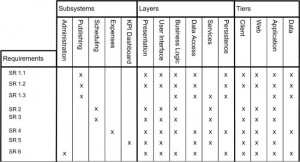 Every month I get a copy of PMI Today and I annotate 3 data points: New PMP® for the month, new PMPs year-to-date (YTD), and total number of active PMPs. The trend continues, with the new number of PMPs in April totaling 4,718. Year-To-Date total is 19,596. There are a total of 381,111 active PMPs.
The current trend predicts PMI will hit 400,000 active PMP credential holders this year.
Every month I get a copy of PMI Today and I annotate 3 data points: New PMP® for the month, new PMPs year-to-date (YTD), and total number of active PMPs. The trend continues, with the new number of PMPs in April totaling 4,718. Year-To-Date total is 19,596. There are a total of 381,111 active PMPs.
The current trend predicts PMI will hit 400,000 active PMP credential holders this year.
Though I'm still worried we're rapidly reaching a tipping point, I want to congratulate those 4,718 out there who passed the exam. It's no cakewalk and I recognize your efforts and achievement.
Of those 4,718, I've been in contact with several who passed the exam with the aid of my new product PMPrepFlashcards.com. Yes, I know, gratuitous plug.
| December (2009) | January | February | March | April | |
| New PMPs (Monthly) | 5,403 | 3,714 | 3,713 | 5,344 | 4,718 |
| New PMPs (YTD) | 3,714 | 7,429 | 12,779 | 19,596 | |
| Total Active PMPs | 361,238 | 367,619 | 371,014 | 375,959 | 381,111 |



 Things seemed to get a little heated in the meeting yesterday. Upon reviewing the vendor-supplied PowerPoint deck, we noticed graphs illustrating the quantity of
Things seemed to get a little heated in the meeting yesterday. Upon reviewing the vendor-supplied PowerPoint deck, we noticed graphs illustrating the quantity of 

